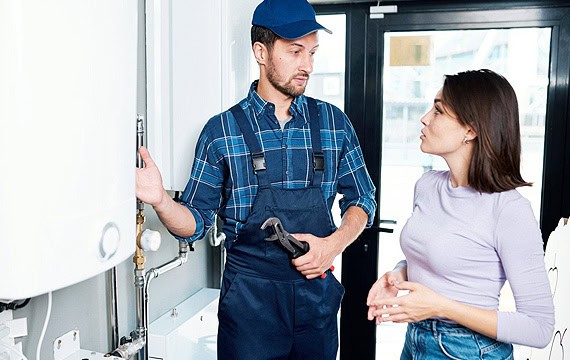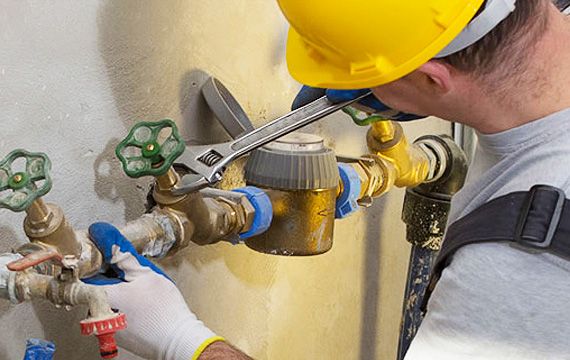Understanding Plumbing Basics: Exploring the Three Main Types of Plumbing Systems
Introduction
Plumbing is a fundamental aspect of modern living that often goes unnoticed until something goes awry. We depend on our plumbing systems for everything from drinking water to sanitation, so understanding the basics can empower homeowners and renters alike. In this comprehensive guide, we will dive deep into "Understanding Plumbing Basics: Exploring the Three Main Types of Plumbing Systems." Whether you're a DIY enthusiast or a curious homeowner, this article aims to provide you with insights that can enhance your knowledge and possibly save you some bucks on repairs.
Understanding Plumbing Basics: Exploring the Three Main Types of Plumbing Systems
There are three principal types of plumbing systems that serve residential and commercial buildings: potable water systems, drainage and waste disposal systems, and venting systems. Each type plays a vital role in ensuring that water flows efficiently and waste is disposed of properly. Let's break these down further.
Potable Water Systems
What is a Potable Water System?
A potable water system is designed to supply safe drinking water to homes and businesses. It typically includes various components such as pipes, fixtures, valves, and fittings.
Components of Potable Water Systems
- Pipes: These are made from materials like copper, PVC, or PEX.
- Valves: Used to control the flow of water.
- Faucets and Fixtures: Where users access potable water.
How Does It Work?
Water from municipal sources or wells enters your home through service lines. It's filtered and treated before reaching your faucets, ensuring it meets health standards.
Importance in Daily Life
Think about it—how often do you turn on the tap without considering where that water comes from? A reliable potable water system is crucial for hydration, cooking, bathing, and cleaning.
Drainage and Waste Disposal Systems
Overview of Drainage Systems
Drainage systems are responsible for removing wastewater from your home. This includes everything from sinks to toilets.
Key Components
- Drain Pipes: Carry wastewater away from fixtures.
- Traps: Prevent sewer gases from entering your home.
- Sewage Lines: Transport waste to treatment facilities.
Functionality Explained
When you flush a toilet or drain a sink, gravity plays a significant role in moving waste through these pipes to designated sewage treatment areas.
Venting Systems
What Are Venting Systems?
Venting systems are essential for maintaining air pressure within your plumbing system. They allow sewer gases to escape while ensuring smooth drainage.
Components You Should Know
- Vent Pipes: Extend through the roof to release gases.
- Air Admittance Valves (AAVs): Allow air in when necessary but prevent gases from escaping back into the home.
Why Venting Matters
Without proper ventilation, you could experience slow drains or even unpleasant odors in your home. It’s an unsung hero of plumbing!
Choosing the Right Plumbing System for Your Home
Factors to Consider When Selecting a System
When deciding on which plumbing system best meets your needs, take into account:
- The size of your home
- Local building codes
- Available materials
Cost Implications
Understanding installation costs can significantly affect your decision. Potable systems tend to be more expensive due to strict health regulations compared to drainage systems that focus primarily on functionality.
Common Issues in Plumbing Systems
Leaks & Drips
These pesky issues can lead not only to wasted water but also costly damage over time if not addressed promptly.
Clogs
Clogs can occur in any part of your plumbing system but are most common in kitchen sinks due to grease buildup or foreign objects lodged in pipes.

Noisy Pipes
Banging or rattling noises might indicate air trapped within the pipes or loose fittings that need attention.
Preventative Maintenance Tips
Regular Inspections
Schedule annual inspections with a licensed plumber who specializes in plumbing Helotes services.
Know Your System
Understanding how each component works will help you catch potential problems early before they escalate into bigger issues.
FAQs
1. What types of materials are used for plumbing pipes?
Common materials include copper, PVC (polyvinyl chloride), PEX (cross-linked polyethylene), galvanized steel, and cast iron. Each has its pros and cons depending on application.
2. How often should I have my plumbing inspected?
Ideally, schedule an inspection at least once every year or sooner if you've experienced leaks or other significant issues recently.
3. Can I fix minor plumbing issues myself?
Yes! Many minor tasks like unclogging drains or replacing fixtures can be done by homeowners with basic tools and knowledge. Always consult documentation or video tutorials first!
4. What should I do if I notice a leak?
Shut off the main water supply immediately if it's significant; then contact a licensed plumber for emergency repairs as soon as possible!
5. Why does my faucet drip even after I shut it off?
This often results from worn-out washers inside the faucet mechanism. Replacing these parts usually resolves the issue quickly without needing to replace the entire fixture!
6. How do I find a reputable plumber?
Look for licensed professionals with good reviews online (like Google My Business) or ask friends for recommendations—especially those who live nearby like in Helotes!
Conclusion
Understanding Plumbing Basics: Exploring the Three Main Types of Plumbing Systems is crucial knowledge everyone should possess—whether you're a first-time homeowner or have been living under one roof for years! Knowing how each system works not only helps you appreciate modern conveniences but also prepares you for potential challenges ahead! With this newfound wisdom under your affordable plumbers nearby belt—and perhaps some tips borrowed from our discussion—you'll be better equipped to tackle any plumbing dilemma life throws at you!

So remember folks—keep those pipes flowing smoothly!